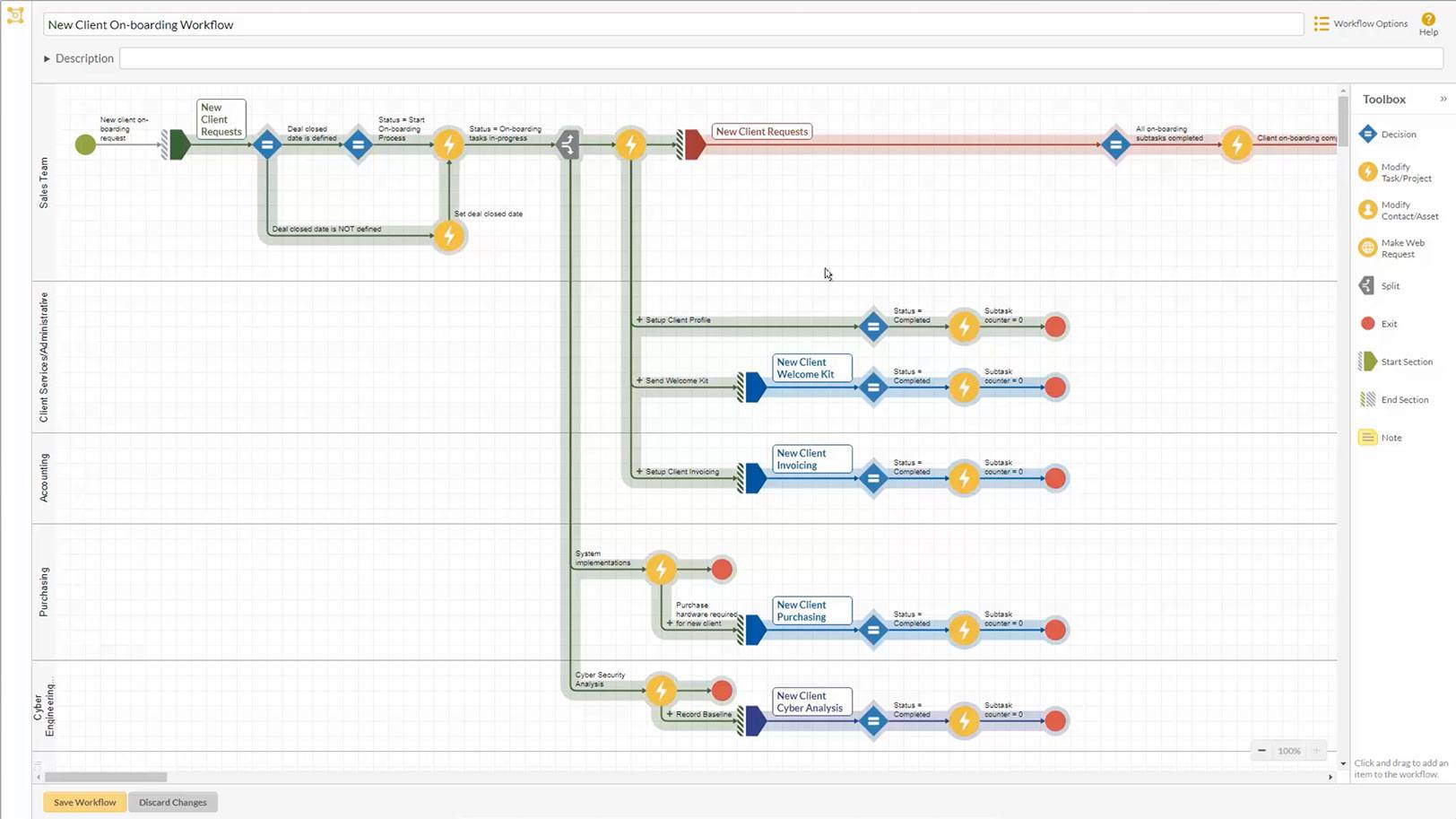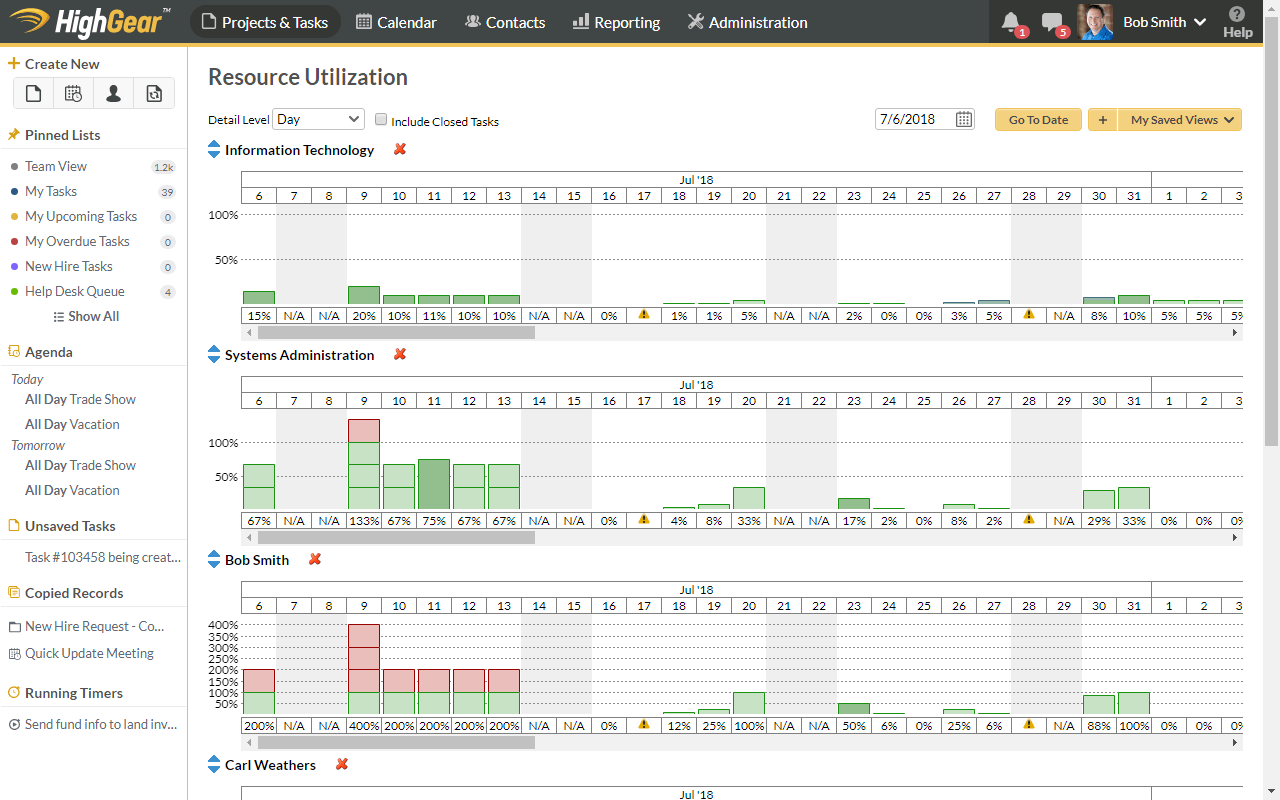How does a team of 25 put 410 work days per year back into their team time budget?
In an environment where even simple workflow automation has been carried out, team members will interact with workflow-driven tasks at least 10 times per day, and each interaction will save on average 3 minutes each interaction.
10 interactions x 3 minutes x 25 staff x 5 days = 63 hours per week x 52 weeks/8 hour working day = 410 work days
Three minutes is not a lot of time in isolation, but when an employee uses workflows throughout the day, that relatively small time saving quickly accumulates. If you can scale workflows and applications across your organization, the saving in man hours becomes a very tangible and visible benefit of workflow automation.
Extend workflow across your organization, and automate more and more tasks and time-savings will increase beyond this simple math.

Knowledge and information workers in particular can benefit greatly from automation, and not just in terms of saving time. Workflow automation can be used to eliminate repetitive and tedious tasks, which in truth do not really require the attention of someone skilled and experienced enough to be able to exercise judgment: every job has the mundane work which just has to get done.
But, mundane work does need to be done by the knowledge worker per se, instead it can be automated for them, leaving staff to focus and apply energies on the ‘real’ work where value is to be gained.
Let’s look at a couple of common examples of workflows which are ripe for automation:
Content Approvals
Creating and publishing content for use by the organization typically involves a lot of back and forth email communication, continuing meetings, stakeholder consultations, and ultimately having the content published in either online form (email outreach, Social Media, website) or through traditional media (TV, print, sales collateral).
Automation content approvals removes the usually one-sided email chains and interminable meetings, many of which which typically result in a suggestion of just “one more modification.”
Automation allows for communication and collaboration to be much more effective, visibility and accountability into work is improved resulting in fewer meetings and reduced misunderstandings, plus everyone is kept in the loop while content flows the process with less distraction and upheaval.
Employee On-boarding
On-boarding staff is crucial for both operational effectiveness and for retaining valuable human resources. A poor on-boarding experience sets a very negative tone for a new employee, while ensuring new staff are rapidly brought up to speed on company policies and equipped with the appropriate resources to do their job will directly impact on how quickly they can contribute to organizational performance.
Automating workflows and using role-based permissions can trigger workflows which cross departmental boundaries. For instance, a typical hire will need IT privileges and resources (IT), be set up with payroll and benefits (Accounting) and be provided with building access and security passes (Facilities). Meanwhile, HR and the hiring department will need to be kept abreast of the status of all of the associated tasks to ensure the business is ready to start when the employee turns up for their first day on the job.
Automating these workflows allows every department involved of what they need to get done, by when, and who needs to be informed upon completion. This is something that cannot be effectively done using spreadsheets and emails, at least not without a great deal of wasted time and effort, or at the expense of being able to scale to enterprise level.
The bottom line is that having a long list of tasks with multiple dependencies, typically crossing inter-departmental boundaries, makes it easy for inefficiencies and errors to creep in.
Workflow automation removes these inefficiencies and minimizes human error.
Focus on Problem Solving not Solution Building
Another time-saving benefit of workflow automation is the speed with which it takes to build a workflow solution.
You may spend significant resources working on finding out what your problem is, or you may already be very aware of a pain point in manual work operations.
However, building a workflow solution to automate the pain away may be just as painful as the existing state of affairs.
Therefore, many teams and organizations will simply soldier on with what they have in place already, rather than go through the upheaval, expense and risk of transforming.
Using a no-code workflow platform such as HighGear, the ability to create new business applications and automated workflows is much faster and cheaper than using a traditional Dev Ops approach. For instance, business analysts can create an application themselves, using business tools such as custom form designers, Visual Workflow, and recurring task creation, and workflows that can be triggered by workflow itself, an incoming email, or manually.
No-code workflow solutions deliver the power to solve your own problems, without the need to burden IT departments.

Automate Workloads Between Individuals, Teams, and Departments
With departments consisting of a handful of people or hundreds, there is a need for a great deal of communication between co-workers on how work will get shared out and allocated.
Into the mix, we should throw the unpredictable nature of sickness, schedule changes, personal days, vacation time, and training requirements. With just a few staff, managing this can become a very complex task, but with hundreds of staff coordination requires dedicated resources and valuable time which are a non-productive drain on performance.
Instead of allocating workload via email, shared spreadsheets, and telephone, which are very inefficient and unreliable, automating the process means everything will reside in one place, and accuracy and accountability will improve. Vacation, personal, and sick days can be automatically accounted for, and work rerouted to backup staff or escalated to supervisors for manual allocation if desirable.

Automating work allocation means you remove the expense of time and resources on coordination, but also improve how work is shared out among your teams and people. For instance, where a person or team is clearly overloaded with work, it is not appropriate to allocate more work to them when others have unused capacity. Sharing work like this means it gets done faster, but also helps to remove bottlenecks in work production too.
Summary
Work which is repetitive in nature is ripe for workflow automation.
A no-code workflow platform allows automated workflows to be created at speed and for a fraction of the cost of traditional workflow solutions.
No-code workflow platforms, such as HighGear, provide your people with the power to solve their own problems and seize opportunities directly, without burdening IT.
